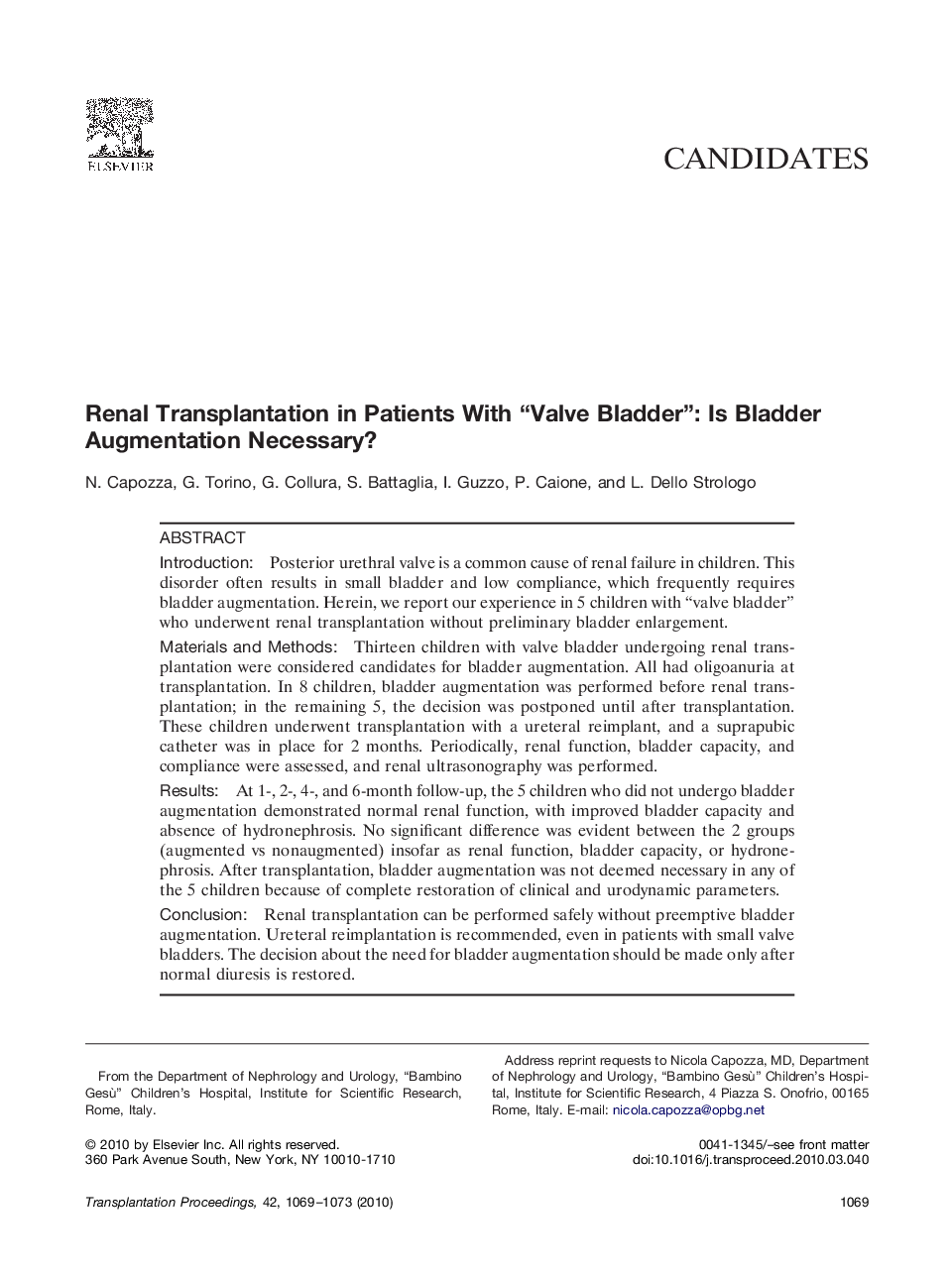| Article ID | Journal | Published Year | Pages | File Type |
|---|---|---|---|---|
| 4259591 | Transplantation Proceedings | 2010 | 5 Pages |
IntroductionPosterior urethral valve is a common cause of renal failure in children. This disorder often results in small bladder and low compliance, which frequently requires bladder augmentation. Herein, we report our experience in 5 children with “valve bladder” who underwent renal transplantation without preliminary bladder enlargement.Materials and MethodsThirteen children with valve bladder undergoing renal transplantation were considered candidates for bladder augmentation. All had oligoanuria at transplantation. In 8 children, bladder augmentation was performed before renal transplantation; in the remaining 5, the decision was postponed until after transplantation. These children underwent transplantation with a ureteral reimplant, and a suprapubic catheter was in place for 2 months. Periodically, renal function, bladder capacity, and compliance were assessed, and renal ultrasonography was performed.ResultsAt 1-, 2-, 4-, and 6-month follow-up, the 5 children who did not undergo bladder augmentation demonstrated normal renal function, with improved bladder capacity and absence of hydronephrosis. No significant difference was evident between the 2 groups (augmented vs nonaugmented) insofar as renal function, bladder capacity, or hydronephrosis. After transplantation, bladder augmentation was not deemed necessary in any of the 5 children because of complete restoration of clinical and urodynamic parameters.ConclusionRenal transplantation can be performed safely without preemptive bladder augmentation. Ureteral reimplantation is recommended, even in patients with small valve bladders. The decision about the need for bladder augmentation should be made only after normal diuresis is restored.
